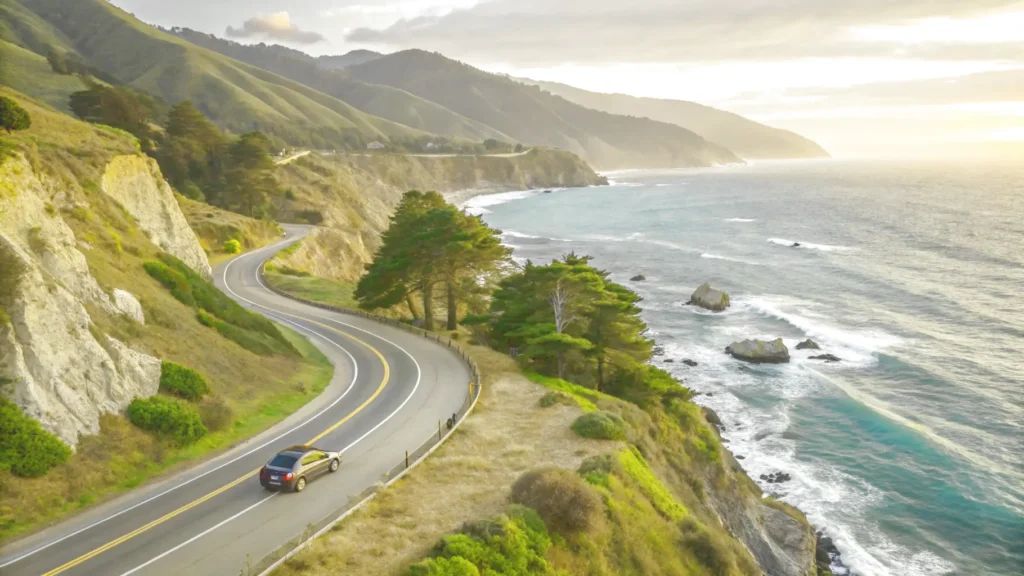
A west coast road trip is more than just a vacation; it’s a rite of passage. It represents the ultimate journey of freedom, discovery, and unforgettable scenery.
From the misty rainforests of Washington to the sun-drenched beaches of Southern California, this drive offers a breathtaking collection of America’s most iconic landscapes.
But the main question everyone asks is: how do you plan the perfect trip? The answer lies in flexibility, smart planning, and knowing the must-see stops and hidden gems along the way.
This comprehensive guide is designed to be your one-stop resource.
We will cover everything from popular routes and can’t-miss detours to budgeting tips and the best time to go. Consequently, you’ll have all the tools you need to build the adventure of a lifetime.
Why a West Coast Road Trip is an Unforgettable Adventure
What makes driving the West Coast so special? It’s the sheer diversity. In a single journey, you can witness towering redwood trees that touch the sky, dramatic sea stacks pounded by Pacific waves, and vibrant cities buzzing with culture and innovation.
This isn’t just a drive; it’s an experience that stitches together multiple vacations into one epic tapestry.
You have complete control over your itinerary. You can linger for days in a charming coastal town or make a spontaneous detour to a national park. This freedom is the true spirit of a west coast road trip.
Planning Your Ultimate West Coast Road Trip: The Essentials
Proper planning is the foundation of a stress-free adventure. Before you even think about packing the car, you need to consider the core logistics. Taking the time to sort out these details ensures your focus remains on the incredible views and experiences ahead.
When is the Best Time to Go?
While a west coast road trip is possible year-round, the “best” time depends on your priorities. Late spring and early fall generally offer the sweet spot of pleasant weather and fewer crowds.
| Season | Pros | Cons |
| Spring (April-June) | Wildflowers, fewer crowds, pleasant temperatures. | Potential for “June Gloom” in SoCal, rain in the PNW. |
| Summer (July-Sept) | Warmest weather, all attractions are open. | Peak tourist season, higher prices, and booking is essential. |
| Fall (Sept-Nov) | Fewer crowds, beautiful foliage in the PNW, warm ocean. | Shorter days, some seasonal closures begin. |
| Winter (Dec-Mar) | Fewest crowds, lower prices, snow in mountains. | Road closures (especially mountain passes), cold/rainy. |
How Long Do You Need?
The ideal length for your trip is highly personal. However, to truly experience the highlights without feeling rushed, two weeks is a great starting point.
- 1 Week: Possible, but very rushed. You would need to focus on a specific segment, like the Oregon coast road trip or a drive from San Francisco to Los Angeles.
- 2-3 Weeks: This is the sweet spot. It allows you to drive the entire coast from Seattle to San Diego with time for major cities and a national park detour.
- 4+ Weeks: A month or more gives you the luxury of exploring deeply. You can add multiple national parks, spend several days in each city, and discover truly off-the-beaten-path destinations.
Choosing Your Route: North to South or South to North?
This is a classic debate among road trippers. Driving North to South (e.g., Seattle to San Diego) is the most popular choice. The primary advantage is that the ocean and the most scenic pull-offs will be on your right side. This makes it easier and safer to stop for photos.
Conversely, driving South to North can sometimes mean less traffic on your side of the road and a unique perspective as the landscapes unfold from desert sun to northern mist. There is no wrong answer here; it simply comes down to personal preference.
Budgeting For Your Trip
Your budget can vary wildly based on your travel style. Key expenses include gas, lodging, food, and activities. To get a handle on your finances, it’s wise to start with a plan. For example,
learning some simple but effective ways for savings on a road trip can make a huge difference, allowing you to stretch your dollars for more experiences. A good baseline is to budget
150−
150−
250 per person, per day, but this can be adjusted for camping or luxury stays.
What To Pack?
Layering is your best friend on a west coast road trip. The weather can change dramatically from one region to the next. You might start a day in a foggy, cool San Francisco and end it in sunny, warm Monterey.
Therefore, packing a mix of clothing is essential. A comprehensive road trip essentials checklist will ensure you don’t forget anything vital, from a reliable power bank to a first-aid kit.
The Classic West Coast Road Trip Itinerary (A Flexible Guide)
This route covers the most iconic stretch of the Pacific coast. Think of it as a template you can customize. Spend more time where you love it, and skip what doesn’t interest you. This itinerary runs North to South.
Stop 1: Seattle, Washington
Your journey begins in the Emerald City. Grab a coffee at the original Starbucks, watch the fish fly at Pike Place Market, and get a panoramic view from the Space Needle. Give yourself at least two days to soak in the city’s unique, grunge-meets-tech vibe before hitting the open road.
Stop 2: The Majestic Oregon Coast (US-101)

Once you leave Washington, you’ll join the legendary US-101. Oregon’s coastline is a masterpiece of public land, with dramatic sea stacks and pristine beaches.
- Cannon Beach: Home to the iconic Haystack Rock.
- Tillamook Creamery: A delicious stop for cheese and ice cream lovers.
- Samuel H. Boardman Scenic Corridor: A stunning 12-mile stretch of coastline in southern Oregon with numerous viewpoints.
Stop 3: California’s Redwood Giants
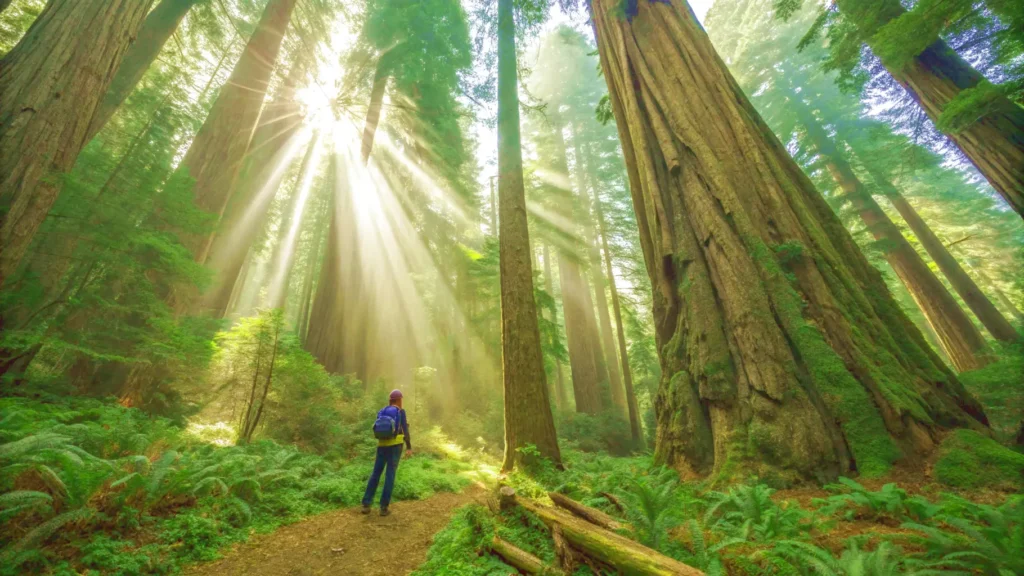
Crossing into California, the landscape transforms. You will drive through Redwood National and State Parks, home to the tallest trees on Earth.
Walking among these ancient giants is a humbling and awe-inspiring experience. Take the Newton B. Drury Parkway for a scenic detour right through the heart of the forest.
Stop 4: San Francisco & The Bay Area
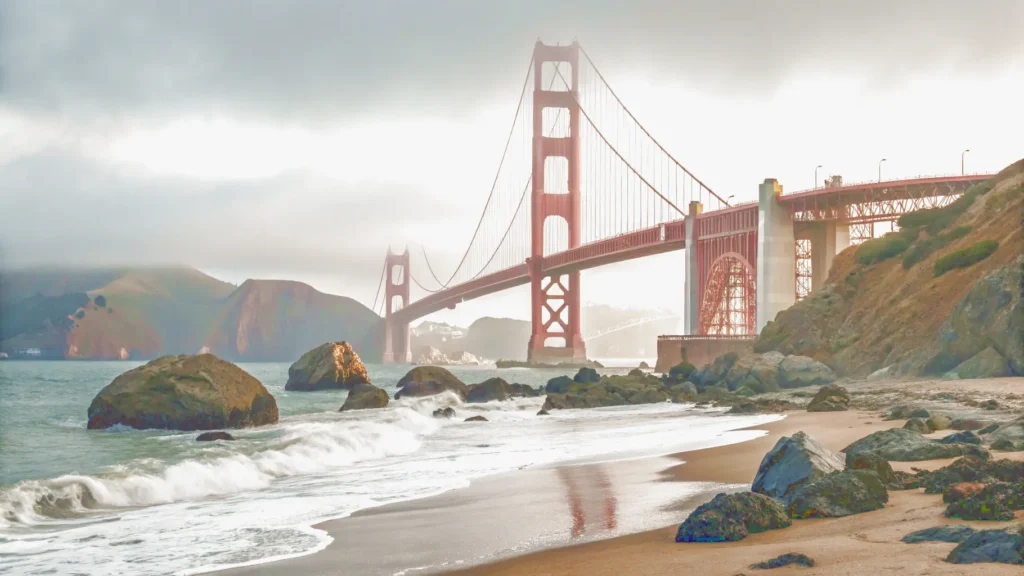
No west coast road trip is complete without a stop in San Francisco. Drive over the iconic Golden Gate Bridge (be sure to stop at the Vista Point on the north side for photos), explore the infamous Alcatraz Island (book tickets months in advance), and ride a historic cable car.
The city’s hills and eclectic neighborhoods are a blast to explore.
Stop 5: Cruising Highway 1: Big Sur
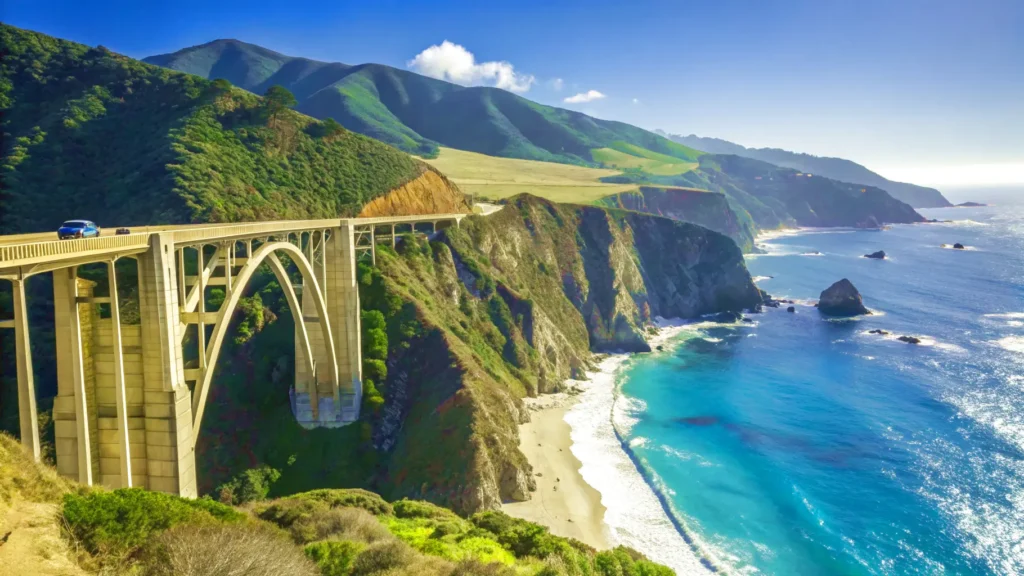
This is arguably the most famous scenic drive in the United States. The stretch of Highway 1 between Carmel-by-the-Sea and San Simeon is known as Big Sur. It’s a winding, cliff-hugging road with jaw-dropping views at every turn.
- Bixby Creek Bridge: The most photographed bridge on the West Coast.
- Pfeiffer Big Sur State Park: Offers great hiking among redwoods.
- McWay Falls: A stunning waterfall that tumbles directly onto the beach.
Important Note: Landslides can occasionally close parts of Highway 1. Before you go, always check the current road conditions on the Caltrans website for the most up-to-date information.
Stop 6: Southern California Fun: Los Angeles to San Diego
As you continue south, the vibe shifts to classic SoCal.
- Santa Barbara: Known as the “American Riviera,” it’s a beautiful city with Spanish-style architecture.
- Los Angeles: Explore Hollywood, visit the Griffith Observatory for incredible city views, and wander the Santa Monica Pier.
- San Diego: Your journey concludes in this laid-back city. Enjoy the beautiful beaches of La Jolla, explore Balboa Park, and savor some of the best Mexican food north of the border.
Optional Detours & Add-Ons for Your West Coast Road Trip

The beauty of this trip is its potential for amazing side quests. If you have extra time, consider adding one of these detours to your itinerary.
For the National Park Lover
From the main coastal route, you can easily loop inland to visit some of the country’s most spectacular national parks.
A popular route is to drive from San Francisco to Yosemite National Park, then cross the Tioga Pass (summer only) towards Las Vegas, Zion, and the Grand Canyon before rejoining the coast in Los Angeles.
For more inspiration on a grand journey, see how this compares to a full cross-country road trip.
For the City Explorer
If urban adventures are your thing, add a few more cities to your list. Portland, Oregon, with its quirky culture and fantastic food scene, is an easy addition.
From Southern California, a detour to Las Vegas is a popular choice for a few days of spectacle and entertainment before returning to the coast.
For a Slower Pace
Escape the main highway and explore California’s wine country. The rolling hills of Napa and Sonoma Valleys offer world-class wineries, incredible restaurants, and a more relaxed pace. It’s the perfect way to unwind for a couple of days mid-trip.
Pro Tips for a Smooth Journey
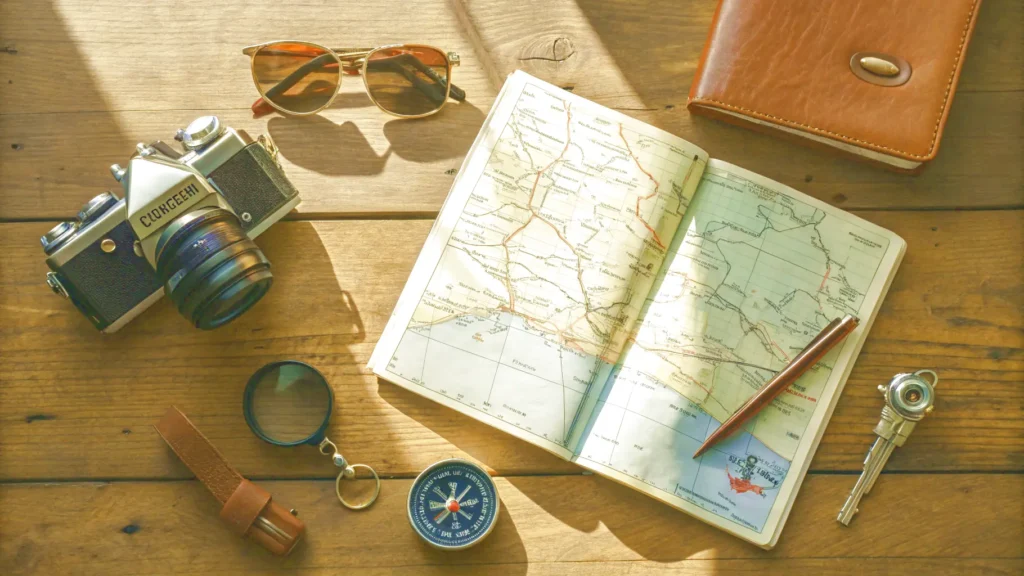
A little expert advice can go a long way. Keep these tips in mind for a hassle-free trip.
- Book Accommodations in Advance: Especially in popular areas like Big Sur and near national parks during the summer, hotels and campsites can book up months ahead.
- Don’t Over-Schedule: Leave room for spontaneity. Some of the best memories are made when you stumble upon an unplanned beach or viewpoint.
- Download Offline Maps: Cell service can be spotty or nonexistent in remote areas like Big Sur and the Redwood forests. Download maps on Google Maps or use an app like Maps.me.
- Stay Entertained: Long stretches of driving are part of the fun. Keep the energy high with great playlists, podcasts, or some classic road trip games to pass the time.
- Check Your Vehicle: Before you leave, get a basic vehicle check-up. Ensure your tires, oil, and fluids are all in good shape. A reliable car is your most important piece of gear.
Frequently Asked Questions (FAQ) about the West Coast Road Trip
Q: How much does a west coast road trip cost?
A: A 2-week west coast road trip can cost between $2,000 and $4,000 per person. This depends heavily on your choices for accommodation (camping vs. hotels), dining (groceries vs. restaurants), and activities. Gas will be a significant expense, likely costing
400−
400−
700 for the entire route.
Q: What is the best car for a west coast road trip?
A: The best car is a reliable one with good gas mileage. You don’t need a 4×4 unless you plan extensive off-road detours. A comfortable sedan, SUV, or even a campervan are all excellent choices. Comfort and reliability are more important than a specific model.
Q: Can you drive the entire west coast?
A: Yes, you can easily drive the entire U.S. West Coast from the Canadian border near Seattle to the Mexican border near San Diego. The core of this route is about 1,650 miles and takes at least 30 hours of pure driving time, which is why 2-3 weeks is recommended to enjoy it properly.
Q: What should I not miss on a west coast road trip?
A: While tastes vary, the three things almost everyone agrees you should not miss are: 1) Driving the Big Sur coastline on Highway 1, 2) Seeing the giant trees in Redwood National and State Parks, and 3) Experiencing the dramatic beauty of the Oregon Coast.
Your Adventure Awaits
A west coast road trip is an investment in memories that will last a lifetime. It’s a chance to disconnect from the daily grind and reconnect with nature, with your travel partners, and with yourself. The open road is calling. With this guide in hand, you have everything you need to answer.
Start planning, get packing, and prepare for the adventure of a lifetime. The Pacific horizon is waiting for you.

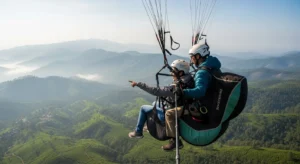
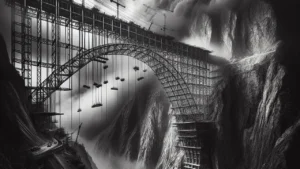


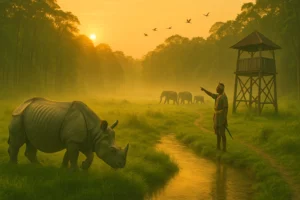
Mentions